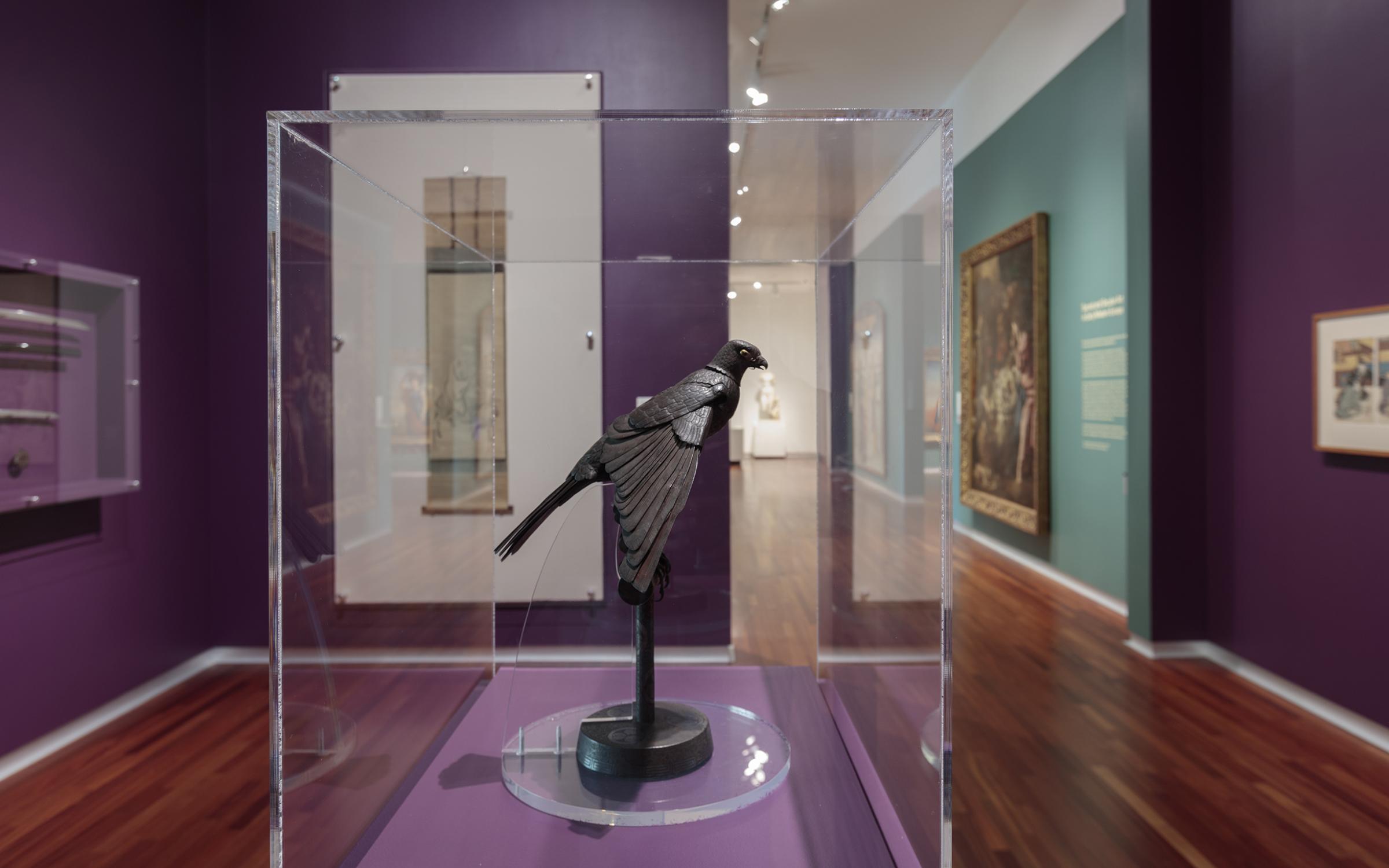
Visitors will find an impressive articulated raptor that demonstrates how a maker of armor transformed his skills to create an intricate moving sculpture. Also on display are a katana and a wakizashi that reflect the 1000-year-plus tradition of Japanese sword making.
Visitors will see regular rotations of the Museum’s growing woodblock print collection. These rotations will feature works from various eras from well-known artists like Hiroshige, Hokusai, and Hasui.
The beginning of the UMFA’s collection of Japanese art dates to 1938, when Mr. and Mrs. James Franken donated more than thirty Edo period (1603–1868) woodblock prints to the University of Utah and its Park Building art gallery, which ultimately became the UMFA. Since then, gifts and purchases have added paintings in scroll and screen form, calligraphy, netsuke, ceramics, prints, swords, and a set of samurai armor.
This gallery is funded in part by the Robert and Evelyn Rosenblatt Enrichment Fund.
- Watch and listen as curator Luke Kelly shares insights into works on view, and other objects in the UMFA’s Japanese art collection, in this fascinating presentation.
- Make a kite inspired by Japanese woodblock prints from the UMFA collection in this Third Saturday activity.
- See all of the UMFA's education resources on Japanese art here.
